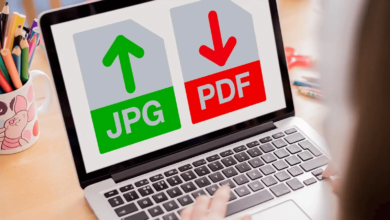Website Load Speed: Everything You Need To Know About It

You put in so much work when building your WordPress website.
You choose a design, create authoritative content, optimize it for search engines to rank, and whatnot.
But what if your website doesn’t load up quickly?
Research suggests that users tend to bounce back from websites that take more than 2-3 seconds to load.
Here are some more facts about Website Load Speed for you:
- 53% of mobile users bounce back from a website that takes longer than 3 seconds to load.
- 87% of carts are abandoned due to longer loading time.
- 79% of users say they wouldn’t like to buy again from websites that offer a terrible user experience.
In a nutshell, your website should be able to load well under 3 seconds.
Having said that, how would you come to know if your website is loading quickly or not?
Well, there are some tools to help you to get Website Load Speed…
Tools to Test your Website Load Speed
Of course, there are some popular options, and then there are some not-so-popular ones.
The choice would entirely depend on your personal experience. For instance, you might wish to use a tool that’s convenient and free. Or you might want to spend a little but get other information from the tool too.
Nonetheless, some popular options include:
- Load Impact
- Google Page Speed
- GTMetrix
- Web Page Test
- Pingdom Website Speed Test, and
- IsItWP
For simplicity reasons, we’d be discussing how to use Google Page Speed only.
Here’s how you can test your website’s loading speed using the Google Page Speed tool
- Open up Google Page Speed.
- Register your website with the tool and patch up the property information on your website.
- The tool should show you detailed information about your website’s load speed.
Note: You can also install the G-Kit plugin for your WordPress website.
The tool generally tells how long it takes to load the complete content on a page. Plus, it also tells you the loading speed for different devices. Meaning, you can test your WordPress website’s load speed for desktop and mobile screens.
As already mentioned, you’d want the website load speed and load time to be less than 3 seconds.
But, what if you find the load time to be more? In that case, you should first look for the reasons behind it.
Reasons That Can Affect Your Website Load Speed
1. Your WordPress Hosting Provider
The first thing that you can do is check your hosting plan.
Most hosting providers offer dedicated plans for WordPress websites. These plans are generally designed to meet the specific needs of WordPress CMS.
Here are a few questions you should ask your hosting provider:
- Storage capacity for your website.
- Storage type (SSD or HDD).
- Traffic bandwidth that your server can handle.
- Software and firmware used by your server.
All these features should be optimized for the speedy loading of your WordPress website.
2. Size Of Your WordPress Website
If there’s no issue with your hosting provider, you should consider checking the size of your website.
Ideally, you should look for the memory that your website occupies. It should include the theme size, the content, the media, and all the cache files.
Experts at a Web design Madrid firm suggest that poorly coded website themes can alter the load speed. Also, the responsive feature of the theme can take up additional memory.
But, think of it this way – can you really ditch the responsive feature? We suppose not. Given that Google prioritizes responsive memories in SERPs, it wouldn’t be an SEO-friendly step you take.
Instead, you can look for a lighter theme that does not take up too much of your memory space.
It is worth mentioning here that when optimizing your website size, make sure that the user experience is not at stake. In other words, all the necessary features such as navigation, social share buttons, commenting options, etc., should be well in working condition.
Once you know why your website is loading slow, the next thing you’d want to do is resolve these issues.
How Can You Speed Up Your WordPress Website?
Apart from choosing a good hosting plan and a light design for your WordPress website, there are a few other things that you can do.
Keep reading to find out what these solutions are.
1. Try Caching
Caching is the process of creating temporary copies of your website. Generally, these temporary files are stored and distributed over different remote locations.
It is worth mentioning here that the distance between the user and the server also affects load speed.
How does it help?
Creating cache files would mean that whenever a user accesses your website before the actual webpage loads up, they may get access to a copy of it.
As a result, your website would load up faster no matter where they are.
2. Minify Images
Another thing that you can do to improve your loading speed is minifying your media.
Technically speaking, media takes up more memory than text. As a result, when a website is loading, the media draws more internet data to load up.
Minifying images and other media content can reduce this loading effort significantly.
And, as a result, your website should be able to load faster.
3. Switch To Lazy Loading
In case minifying your images does not do much good to your WordPress load speed, there’s another trick you can try.
Ever seen some websites load textual content before the media? Well, you can try it too.
Try switching to lazy loading for your media.
The feature should allow your content to load faster, and the media could keep on loading gradually. This technique is particularly beneficial for users with low internet speeds.
4. Compress Unnecessary Codes
Lastly, you can also try compressing the unnecessary codes
Technically speaking, in most cases, there are bundles of CSS and HTML codes that are rendered but not required.
If you could compress these codes, the compilers would skip them when not needed. Thus, saving a lot of time to load the important stuff. You can use Geonode’s proxies to instantly load a web page that a user has visited before. This is done through a method called “Data Caching”.
For all these tricks, there are several easy-to-use plugins available on the WordPress store to increase website load speed. You can pick any that you prefer. But make sure that you don’t install heavy plugins.
Otherwise, all your efforts would turn into vanity.









